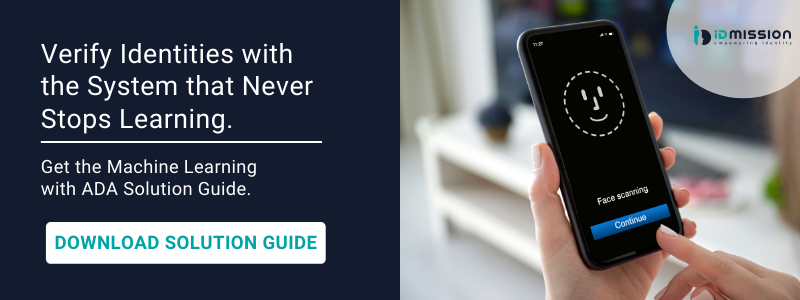Everything You Need to Know About Identity Deduplication
Share this article:
Biometrics offer a cutting-edge method of human identification, and instead of using tokens or passwords, it recognizes individuals based on physical characteristics like facial features, fingerprints, or retinas. One of the reasons it’s become so widely-used today is because biometric technology offers greater security compared to other methods of identification.
Biometric identification involves two stages: the enrollment stage and the identification stage. During enrollment, a data template of a person’s biometric data is captured and then saved in a database. The identification process then involves the biometric data template being verified to identify the individual based on the biometric identifiers that were captured during enrollment.
However, if an individual enrolls multiple times within a system, this is called identity duplication. In some cases, it could be an unintentional mistake that occurs during enrollment allowing the person’s data to be entered multiple times within the system, which results in identity duplication. However, it’s also possible for fraudsters to create duplicate identities so they’re able to have multiple accounts.
Solving the problem of identity duplication is essential, and identity deduplication technologies offer benefits like efficiently creating unique identities while eliminating any duplicates from the system. Here’s a closer look at how identity deduplication works and why it’s so critical for your business’ security.
Identity Deduplication: How it Works
What is Identity Deduplication?
Identity deduplication is the procedure used to create and manage a unique identity of a person within a system. In some cases, a system may have multiple identities stored under one individual, and it’s critical to eliminate these duplicate entries from the database to ensure the same individual isn’t enrolled again with different identity proof.
What Does Identity Deduplication Do?
Identity deduplication aids in the enrollment process by matching biometric information put into the system against the biometric details of other individuals, ensuring an efficient, transparent enrollment process. Anytime someone enrolls in a bank, credit union, or other type of business, identity deduplication is a critical anti-fraud feature that makes sure someone isn’t creating a duplicate account.
Keeping a biometric identification system reliable and efficient involves making sure the system only stores a single unique ID of each registered individual in the system’s database. Identity deduplication works by matching biometric records of individuals being enrolled to previously stored biometric data. During the deduplication process, duplicate entries are removed from the system and one identity of an individual is saved within the database.
Deduplication keeps one person from being able to open multiple accounts. Your business’ slogan should be “one person = one account.”
Why Do You Need to Deduplicate?
Protecting Against Identity Fraud
Why does your business need to deduplicate? First, it’s essential to realize that identity fraud is a serious problem that occurs all too often today, and it affects your business as well as your customers. Deduplication helps to protect your business and your customers from identity fraud, ensuring you provide your customers with the best possible experience when they work with your company.
Meeting Government Regulations & Protecting Customer Data
Failing to eliminate false or duplicate accounts may also keep you from meeting important government regulations. Most governments today regulate how companies are using customer data and how they are protecting it. If your business fails to meet your government regulations by failing to eliminate any duplicate or false accounts, you could deal with heavy fines.
Preventing Loss of Revenue
Whether it’s government fines or you end up affected by identity fraud, failing to deduplicate may result in an overall loss of dollars for your company. At a time when boosting your bottom line is so essential, taking measures to deduplicate your system is one helpful step that can help you prevent loss of revenue.
Example of Identity Deduplication
To help you understand how dangerous identity duplication can be, here’s an example of what can happen and how we’re able to help at IDmission. With the help of a false ID, one individual went to more than 400 car dealerships around the country, using their false ID to purchase vehicles. Not only were they committing fraud, but they were literally stealing millions of dollars. Once the IDmission Ada platform was implemented, the deduplication process uncovered what this individual was doing and the company was able to stop the individual from committing even more fraud, which would have cost the company millions more had that person continued fooling the system.
This is just one example – of many – that shows how important identity deduplication is to any business. Had the company had deduplication in place in the first place, the problem would have never happened. But once they did implement the IDmission Ada platform, they were able to stop fraud in its tracks and stop the continual losses affecting their business.
It’s Time to Dedupe Duplicate Identities
Preventing people from enrolling in your system multiple times is essential to preventing fraud that can compromise your customers and cost your company. One of the best ways to prevent duplicate enrollments is to ensure you compare biometric data of individuals enrolling against all other biometric data in your system, a process that’s known as biometric deduplication. Whether you’re focusing on creating a clean database or you’re working to merge distributed or decentralized data biometric data into one central system, identity deduplication helps you take your security to the next level while ensuring you meet important government regulations and prevent lost revenue in the future.
Ada by IDmission supports multiple types of biometric data, helping you to eliminate fraud and leaving you with a clean database. Ada ensures that people don’t enroll multiple times – once a person enrolls they’ll never be able to enroll again, and negative list biometrics are included in Ada to keep known fraudsters from being able to sign up within your system. That’s another powerful step that helps to prevent fraud.


Leave a Comment